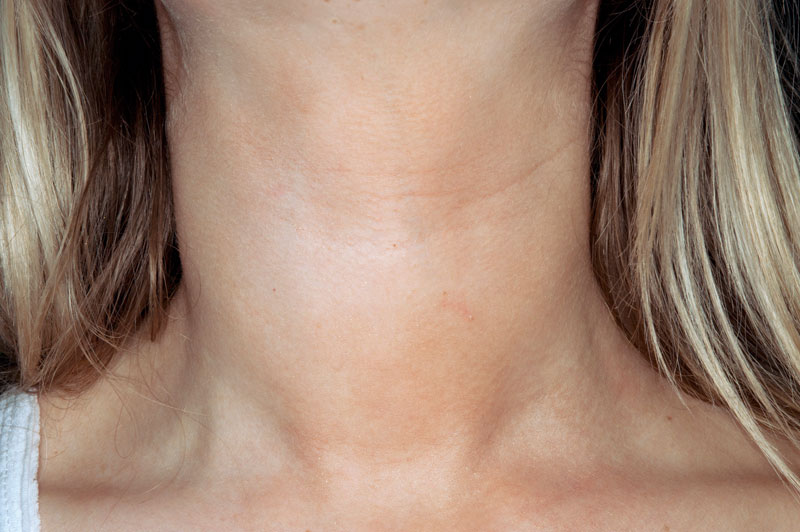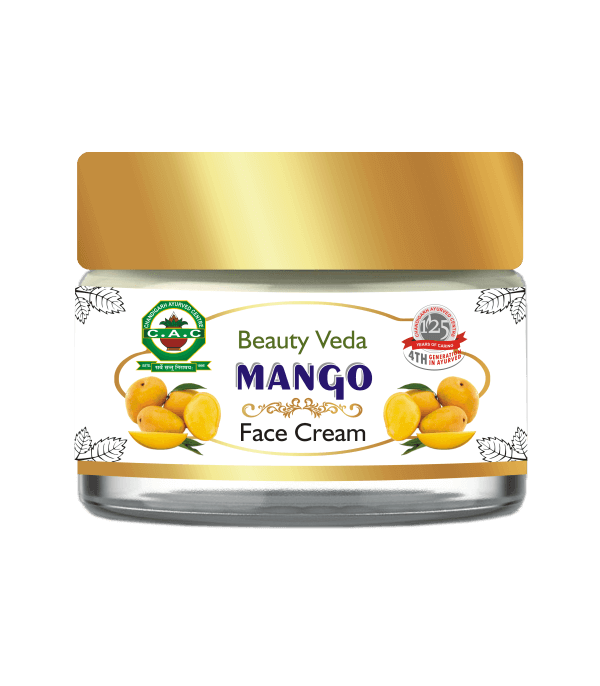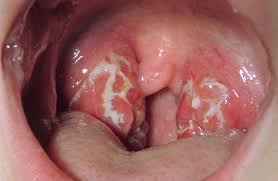Thyroid is spreading rapidly around the world, which is a matter of concern. However, these home remedies cannot cure thyroid disease completely, but it can definitely provide relief from its symptoms and other physical problems. It can also be helpful in increasing the effect of thyroid medicine. At the same time, thyroid is a problem in which medical treatment is most important. Therefore, some suggestions related to thyroid medicine have also been included in the article.
Table of Contents
What is Thyroid?
Not a thyroid disease, but a gland found further down the throat. It is butterfly shaped. This gland controls many essential activities of the body. It serves to convert food into energy. The thyroid gland produces T3 ie triiodothyronine and T4 ie thyroxine hormone. These hormones have a direct effect on the breath, heart rate, digestive system and body temperature. In addition, they also control bones, muscles and cholesterol. When these hormones become unbalanced, the weight starts to decrease or increase, this is called thyroid problem.
In addition, another hormone is released from the pituitary gland in the brain, called thyroid stimulating hormone (TSH). This hormone controls the flow of the other two thyroid hormones T3 and T4 in the body. It also plays an important role in controlling weight, body temperature, muscle strength and even mood .
Women and the elderly are more prone to have thyroid than men . Also, if someone in the family has had this problem before, then it is more likely to happen.
Types of Thyroid
There are mainly six types of thyroid, which are as follows :
- Hypothyroidism – when thyroid nodules (glands) produce hormones in small amounts.
- Hyperthyroidism – when the thyroid body (gland) produces excess hormones.
- Goiter- This happens due to deficiency of iodine in the food, which causes swelling and lump-like appearance in the throat.
- Thyroiditis – It causes swelling of the thyroid gland.
- Thyroid nodules – Lumps are formed in the thyroid gland.
- Thyroid cancer
Thyroid Symptoms
If the following types of symptoms are seen in the body, then these may be the initial symptoms of thyroid. Keep in mind that thyroid symptoms can also be seen as common illness, so it is better that any changes in the body should be taken seriously. A doctor should be contacted immediately if thyroid symptoms appear in women, especially in pregnancy.
- Constipation
- Exhaustion
- Tension
- Dry skin
- Weight gain or loss
- Reduced sweating
- Decreased heart rate
- high blood pressure
- Swelling or pain in joints
- Thin and rough hair
- Memory loss
- Abnormal menstrual periods
- Fertility imbalance
- Muscle aches
- Swelling on face
- Premature graying of hair
Thyroid Causes and Risk Factors
- The risk factors listed below may be responsible for thyroid:
- If there has been a thyroid before.
- By being a goiter.
- Being over 30 years old.
- History of type 1 diabetes or other autoimmune disorders.
- History of miscarriage, premature birth of child or infertility.
- Family history of autoimmune thyroid disease or thyroid disease.
- Women are at greater risk of it.
- Wrong food, such as over-fried food.
- Excess intake of junk food and fine foods.
- Increased weight or obesity.
After knowing the causes and risk factors of thyroid, now we are going to give you information related to thyroid home remedies.
Thyroid Home Remedies
Here we are going to tell about thyroid home remedies, which can work to bring relief to this problem to a great extent. Make it clear that these home remedies are not possible to affect everyone, because everyone’s physical capacity and thyroid stage are different. In such a situation, some prescriptions can affect someone and not others. Therefore, along with the treatment, you should talk to the doctor before using these home remedies.
Ashwagandha
Thyroid can be treated indigenously from Ashwagandha. Ashwagandha is classified as an adaptogenic (stress reducing) herb. Adaptogen can help the body fight stress. This has been clearly considered in a research conducted by the National Center for Biotechnology Information on animals. Research suggests that ashwagandha may help increase thyroid hormone. At the same time, according to another scientific research, Ashwagandha may prove helpful in the treatment of patients with hypothyroid (non-production of thyroid hormone. Nevertheless, it is important to note that the use of thyroid as a way to avoid it also depends on the thyroid status of the person. Therefore, to treat thyroid disease, a doctor’s advice must be taken before its use.
Essential Oils
The use of essential oils may be helpful in the case of symptoms of thyroid. A research conducted on essential oils related to aromatherapy has believed that sniffing can relieve fatigue due to hypothyroid (thyroid hormone deficiency) problem. On this basis, it can be said that gentle massage of the affected thyroid gland with the help of essential oils and smelling their smell can prove to be effective to a great extent (9). However, it is not clear anywhere which essential oil can be used for relief in this problem. Yes, another research related to thyroid has found some natural herbs to be beneficial as a thyroid avoidance remedy, which essential oils are easily found in the market. These include many names like Lemon Baum, Sage and Rose Meri.
Minerals
Lack of minerals can also be a reason for showing symptoms of thyroid in the throat. At the same time, it will be well known that lack of nutrients can cause many physical problems. Thyroid is also a problem, which can be a result of iodine deficiency. Along with this, this problem can also arise in the absence of some essential nutrients like iron, selenium, vitamin-A, thiocyanate and isoflavins. This is clearly mentioned in a research by Bari University in Italy. It has also been suggested that the addition of iodized salt or oil to food may prove helpful . It can be considered based on the fact that incorporating all these nutrient rich foods into the diet can help reduce the symptoms of thyroid. Also, treatment of thyroid disease can be made more effective. Also, the risk of this problem can be reduced to a great extent.
Kelp
It is beneficial as follows:
If thyroid symptoms appear in the throat, thyroid can also be treated indigenously with kelp. It is a type of sea weed, which is found in the depths of the sea. It is considered the major source of iodine . If someone has an iodine deficiency thyroid problem, kelp may prove effective on it . On this basis, it can be considered as an Ayurvedic treatment of thyroid. At the moment, further research is still needed in this regard.
Guggul
It is beneficial as follows:
Guggul can also be used as an Ayurvedic treatment of Ride. It is obtained from the Guggul tree. Guggulosterone is found in guggul, which has anti-inflammatory and cholesterol-lowering properties as well as the ability to help the thyroid function normally . This can help the thyroid hormone to function properly. Research on animals has found that the use of guggul can improve hypothyroidism . On this basis, it can be assumed that home treatment of Guggul to thyroid may prove beneficial.
Vitamins
Thyroid can be treated at home with the help of vitamins. Indeed, a study done on the role of vitamins in thyroid problems believed that certain vitamins could be helpful in reducing the risk of this problem. The vitamins mentioned in the research include vitamin D, mainly with vitamins A, C, E, B-6, B-12. On this basis, it can be assumed that food containing these vitamins or supplementation can help control thyroid problems as well as thyroid problems to a large extent.
Linseed
It is beneficial as follows:
Flaxseeds may also contribute to the proper functioning of the thyroid gland. Therefore, it can be considered as an Ayurvedic treatment of thyroid. Indeed, it contains omega 3 fatty acids, which may help reduce the risk of hypothyroidism . In such cases, patients with hypothyroidism can take linseed as per the doctor’s advice. However, according to another medical research, more or prolonged use of flaxseed may also be a cause of problems caused by goiter or iodine deficiency.
Coconut Oil
It is beneficial as follows:
Coconut oil can be a good remedy for the treatment of thyroid disease. It can help the thyroid gland to function properly by reducing the thyroid’s symptoms. If a patient is taking thyroid medicine, then it would be better to consult a doctor before taking home treatment of thyroid using virgin coconut oil.
Ginger
It is beneficial as follows:
Ayurvedic treatment of thyroid is also possible with the help of ginger. Actually, ginger contains zinc, potassium and magnesium. It also has anti-inflammatory properties, making it a good home remedy for thyroid. Ginger can be used in various ways to treat thyroid . However, to treat thyroid disease, it is also necessary to take the medicine prescribed by the doctor.
Black Pepper
It is beneficial as follows:
The treatment of thyroid disease is also possible with the use of black pepper. This element can help control thyroid hormones. At the same time, high amounts of piperine may also reduce thyroid gland activation . On the basis of this, black pepper can be considered to be helpful in relieving the symptoms of reduced thyroid domestically and in treating thyroid disease. Provided it is consumed in balanced quantities.
Coriander Leaves
It is beneficial as follows:
A research related to coriander suggests that coriander plant and seed extracts have anti-thyroid (thyroid hormone-lowering) properties. This property is due to the flavonoids present in coriander. On this basis, coriander seeds as well as extracts of leaves can also be considered useful in the problem of hyperthyroid. However, research also suggests that the amount of flavonoids in coriander leaves is much higher than in seeds. Therefore, excessive use of coriander leaves can also worsen the problem. In this case, using coriander seeds as a treatment for safe domestic thyroid may prove to be a better option . In such a situation, this home remedy can help to relieve the symptoms of dry thyroid.
Gourd juice
It is beneficial as follows:
Two separate research suggests that gourd and gourd peel intake may be helpful in reducing increased thyroid. Given both these facts, it can be assumed that the gourd as well as the skin of the gourd can prove to be largely useful for the treatment of thyroid by reducing the symptoms of hyper thyroid.










